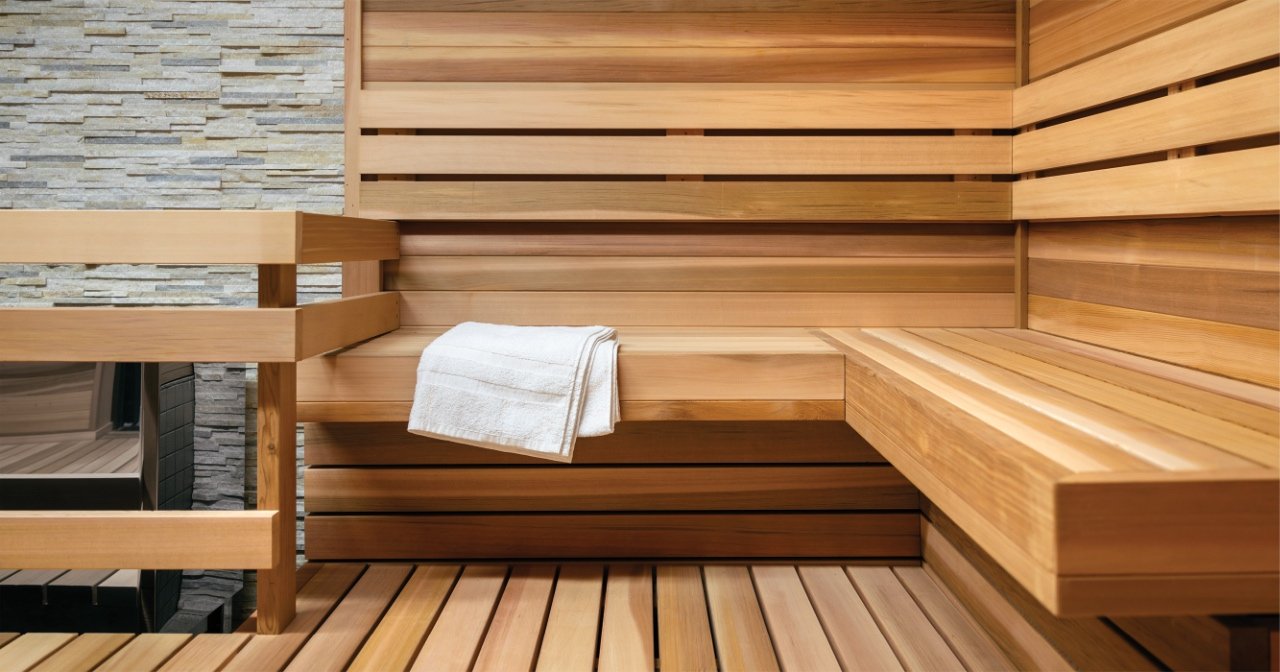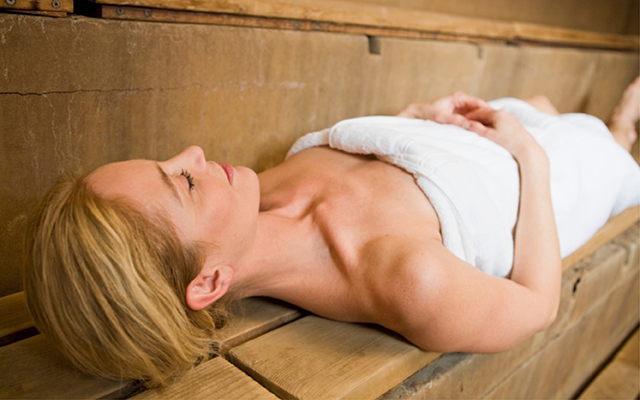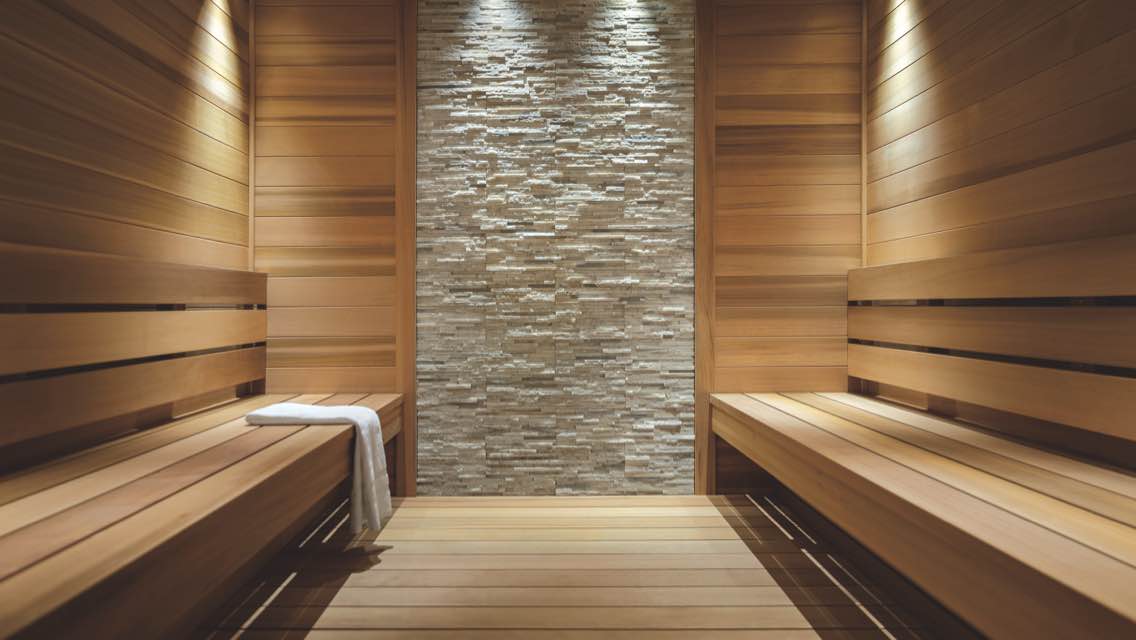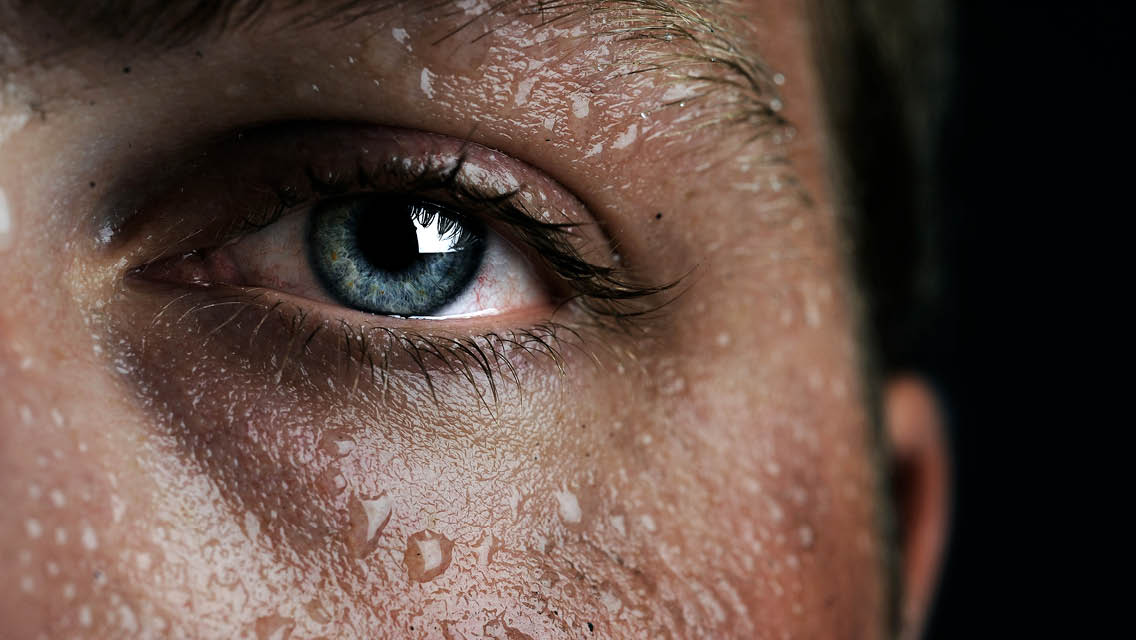What are the health benefits of the sauna? Does it help to reduce pain? Does it boost your immune system? Are there other metabolic benefits? What’s the best way to use a sauna?
Read on and find out. You’ll understand why the sauna not only feels good, but it’s also good for you.
The Origins of the Sauna
Finland is the home of a number of great inventions: wind turbines, heart rate monitors, reflectors (like those on your bike), Fiskars scissors, ice skates, and the sauna. (Fun fact: it’s pronounced SOW-na, not saw-na.)
Finland is also the origin of the word sisu, which complements the effects of the sauna as well.
Sisu: Endurance, perseverance, determination, courage, stamina, strength . . . especially during hard times.
Unfortunately, in most of America, we see the sauna as a luxury rather than a necessity. In Finland, it’s a regular part of bathing.
What is a sauna?
A sauna is a small room or stand-alone space, usually built with or lined with cedar. Eucalyptus, pine, hemlock, or basswood may also be used.
Finnish saunas are hot. They’re kept at a temperature between 176° F (80° C) and 212° F (100° C).
In a traditional Finnish sauna, the heat doesn’t stop there.
In most American “dry saunas,” especially in gyms or hotels, the rocks are there just for looks. In a Finnish sauna, they serve a purpose. Once you start feeling the heat, you douse the rocks with water. The stones instantly turn the water into steam, and a few seconds later, the steam reaches you and feels like a thousand pinpricks on your skin.
As if that’s not enough, the hardcore then gently beat their skin with silver birch branches, which relaxes muscles and relieves mosquito bites.
7 Sauna Health Benefits
A sauna is enjoyable, but not necessarily comfortable. In fact, the heat is stressful, which is why sauna therapy is called heat stress therapy. Your body perceives the extreme heat as a threat and reacts accordingly.
You feel surprised by the initial blast of heat when you walk in the door, but it’s five to 15 minutes later, when your core temperature begins to rise, that alarms start going off in your body.
Blood flow is directed away from your core and out to your skin, and blood vessels dilate, making it easier to get blood, and the heat it holds onto, out to your skin where the heat passes to the environment. Of course, it doesn’t work so well, since it’s hotter in the sauna than it is in your body.
You begin to sweat as another means of cooling the body. Your heart beats faster and pumps more blood with each stroke. You secrete stress-related hormones and neurotransmitters, and your brain starts talking you into stepping out of the sauna.
But if you wait a little longer, and get past the point of discomfort, you’ll gain the health benefits described below. And with each sauna session, you learn to handle the heat a little better than before, allowing you to last longer, or handle it hotter. You adapt to the stress response as you adapt to any other stress.
What if you don’t sweat?
I’ve found that many people who start a fitness program have a hard time sweating, and they overheat during their training sessions.1. Enhanced Hormone and Neurotransmitter Production
Whenever I come across a way to stimulate growth hormone, I’m all ears. Among other things, growth hormone enhances muscle growth, bone formation, and tissue regeneration after injuries. It also increases fat metabolism.
Growth hormone-releasing hormone (the hormone that tells your pituitary to release growth hormone) can rise to four times its normal level, while growth hormone itself can increase two to five times normal levels.
Norepinephrine increases by two to four times normal levels, but studies on epinephrine show it doesn’t always rise. Both neurotransmitters usually increase in response to stress.
The effects of the sauna on cortisol and thyroid hormones are mixed, and the sauna does not seem to affect testosterone levels. However, animal research shows the sauna does improve insulin sensitivity, which is essential for body composition as well as muscle growth.
It can take up to 24 hours for some hormones to return to baseline.
Since the sauna is a stressor, albeit a healthy stressor, those with adrenal fatigue should work up gradually.
If you have adrenal fatigue or chronic fatigue, start with five minutes two to three times a week. Add a minute each week until you can handle 15 minutes at a time. Then, go to a couple of sauna sessions with a brief cooling-off period in between.
2. Detoxification
You release toxins through your sweat.
To protect the rest of the cells in your body, your body stores toxins in your fat cells. As you lose weight or drop body fat, you release those toxins back into your circulation.
You can help your body eliminate toxins through sufficient hydration, sufficient fiber intake, and support detoxification with supplements like milk thistle, berberine, curcumin, N-Acetyl-L-Cysteine (NAC), and others.*
However, perspiration is an essential part of the detoxification process as well.
To emphasize the power of the sauna for detoxification, check this out.
Repeated exposure to methamphetamines during drug busts can cause severe and debilitating effects for police officers. A 2012 paper outlined the impact of a sauna-based detox program for the officers.
Following the treatment, the researchers concluded, “sauna and nutritional therapy may alleviate chronic symptoms appearing after chemical exposures associated with methamphetamine-related law enforcement activities.”
One of the improvements worth mentioning was sleep. Before the treatment, officers averaged 5.8 hours of sleep. Following the treatment, they averaged 7.6 hours.
Improved sleep alone is enough to impact their health dramatically!
If a sauna is that powerful for something like meth, imagine the impact it could have on the hundreds of other toxins you’re exposed to every day.
While in the sauna, or any other time you’re sweating, wipe the perspiration off your body. Some toxins penetrate the skin, and if you don’t wipe off the sweat, as you cool off the toxins can make their way back into your body.
3. Improved Recovery
Since the sauna raises growth hormone, it’s no surprise that it improves recovery rates from exercise. However, the hormonal benefits of the sauna aren’t the only way it enhances recovery.
Sauna sessions also reduce oxidative stress after exercise.
The more intense your training session, the more free radicals you create.
You can consume antioxidants through your diet and by taking supplements like a high-quality multivitamin. Your body has its own built-in antioxidant system as well. The sauna improves your ability to combat free radicals, which speeds recovery from exercise and improves muscle tissue regeneration.
It’s no surprise that professional athletes regularly use the sauna to enhance their recovery from exercise and competition.
4. Pain Reduction
The sauna benefits those with short-term pain, such as from an injury or from delayed onset muscle soreness (DOMS), as well as those with chronic pain.
Four weeks of sauna therapy reduced pain and stiffness in people with rheumatoid arthritis or ankylosing spondylitis. People with fibromyalgia or chronic fatigue also experienced pain reduction and improvements in other symptoms in other studies.
A small New Zealand study showed six weeks of sauna therapy reduced the occurrence of headaches by 44% in those with chronic tension headaches.
Research shows that using the sauna reduces C-reactive protein levels and arterial stiffness. It may slow the progression of degenerative diseases (including Alzheimer’s according to some research) and has been shown to reduce the progression and pain associated with arthritis.
One final pain-relieving benefit is in how you perceive pain.
By consistently exposing yourself to extreme temperatures, you get better at regulating your temperature in any environment. You also get better at handling pain.
I wasn’t exaggerating when I said that the steam from throwing water on the stones feels like a thousand pinpricks. The first time you feel it, it might be almost unbearable. Over time, you adapt. Your perception of the pain changes.
5. Heart Health
Thirty to forty-five minutes of sauna therapy a day for four weeks reduced total and LDL cholesterol. HDL (good) cholesterol may also increase with sauna usage.
Because the sauna lowers levels of inflammation, the lower inflammation levels may also improve cardiovascular health, especially for those with heart disease.
Some people believe saunas lower blood pressure, but that isn’t true. Research shows blood pressure increases while in the sauna, comparable to a light workout. Following the sauna, blood pressure returns to normal.
Like exercise, the short-term rise in blood pressure could be beneficial for those with high blood pressure, but hypertensive patients should always check with their doctors before using sauna therapy.
For those with cardiovascular disease, regular sauna bathing seems to reduce mortality risk.
6. Immune Function
As a short-term stressor, saunas stimulate white blood cell production, which enhances your immune system.
A group of cold sufferers in Germany used a sauna for only three minutes a day, deep breathing in the hot air, and experienced a reduction in the need for cold or flu medications.
Those who sauna regularly have a lower occurrence of infections, especially respiratory-related infections.
7. Stress Reduction
The sauna is a great place to take a break from the rest of the world. You can think, pray, or meditate if you’re alone. You could bring in a book or newspaper as long as you don’t mind ruining the paper it’s printed on. But you’d be foolish to bring in a smartphone, laptop, or other electronic devices.
Taking a break from technology can go a long way toward reducing your stress levels. Of course, the hormones secreted during and after the sauna also serve to lower stress levels.
And if you’re fortunate enough to have a sauna in your home, it can be a great way to reconnect with your significant other.
Which is better: sauna or steam room?
Steam rooms have a lower temperature, but higher humidity, and may trigger heat stress faster than a sauna. You’d likely experience similar benefits from either one, with two exceptions.- Because of the lower temperature in the steam room, you might not experience the same respiratory health benefits, though the humidity does feel good when you have a cold. The hot, dry air in the sauna may be better for respiratory health.
- You don’t sweat as much in the steam room as you do in the sauna. The high humidity of the steam room keeps you from sweating as much, which may limit some of the detox benefits.
How To Take A Sauna
Duration
A traditional Finnish sauna can last for as little as a half-hour to two hours or more.
To get the health benefits described above, stay in the sauna for at least fifteen minutes, take a break to cool down, and re-enter for another fifteen minutes, completing two to three sessions of heat exposure and cool down.
Pro Tip Sipping water with peppermint essential oil may help you last longer, as it has a cooling effect on the body.
Cool Down
Cooling down is as important as the heat exposure. If you remain overheated after the sauna, you decrease blood volume from water loss.
Your hematocrit levels rise as well, which makes your blood thicker and more difficult for your heart to pump through your vessels. You could experience fatigue, chest or joint pain, bruising, or even bloody stools.
Also, if you don’t cool down properly, cortisol levels could continue to rise instead of returning to baseline. However, you’d likely experience these issues only if you had a habit of using the sauna and then rushing off to work day after day.
To cool down, you could relax outside the sauna for 15 to 20 minutes.
From a performance standpoint, this would be a great time to drink a serving or two of branched-chain amino acids.
A cold shower or jumping in the pool could help cool you down faster. Or, if it’s winter, you could jump in a snowbank or a hole cut in the ice on a lake. It might sound extreme if you’ve never done it, but I can tell you from experience that it feels incredible.
After your sauna session, you should feel refreshed, not fatigued.
Frequency
Start with taking a sauna a few times per week for three months. If you combine it with a good strength training workout, take your sauna after your training session. I prefer to take a sauna on my off-days from exercise. As you increase your duration, you might decrease your frequency.
Stick with it for three months, and you’ll see why the Finns and other Scandinavians love the sauna so much. Other than getting enough sleep, I don’t know of another activity that offers so many health benefits for sitting in place, not doing anything.
Summary
Perhaps, it’s time to consider the sauna at your fitness center or gym in the same way you do your favorite exercise equipment. Make it a regular part of your program, rather than something you squeeze in only when it’s convenient.
There’s no doubt that the sauna is beneficial, especially in terms of enhancing recovery between training sessions and keeping your immune system in tip-top shape.
Try it four days per week for four weeks in a row. I bet you won’t want to live without it after that.
References





